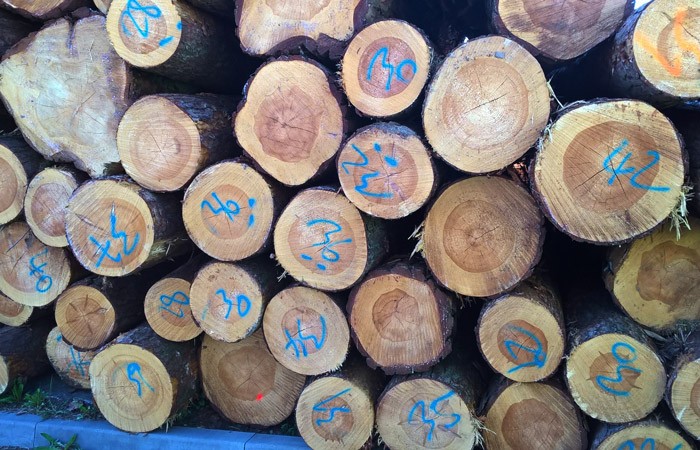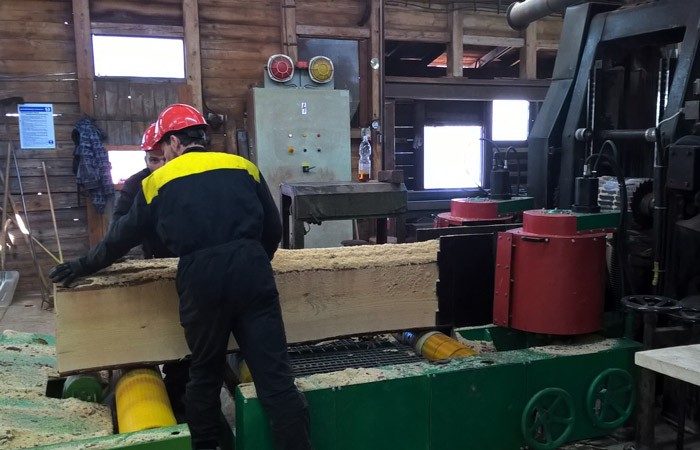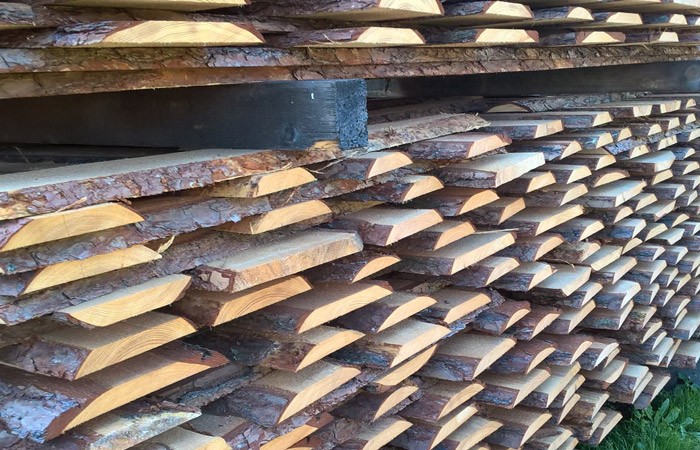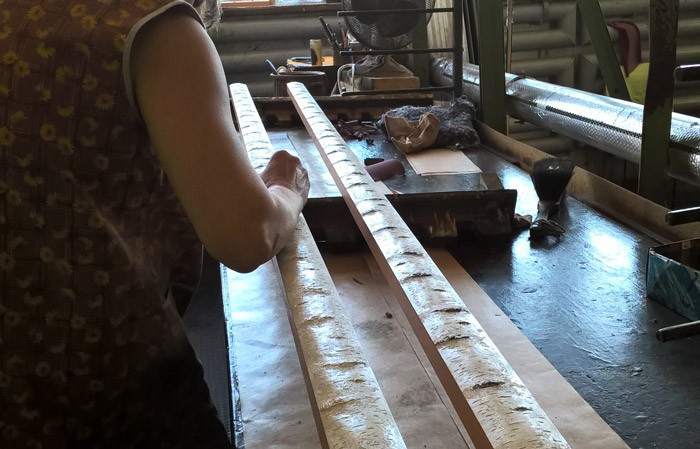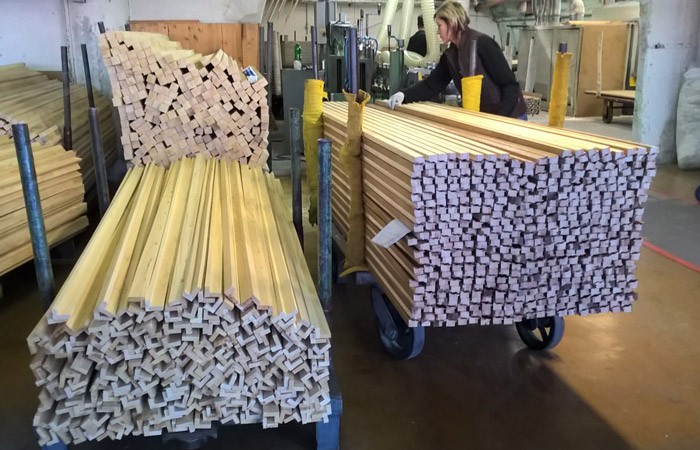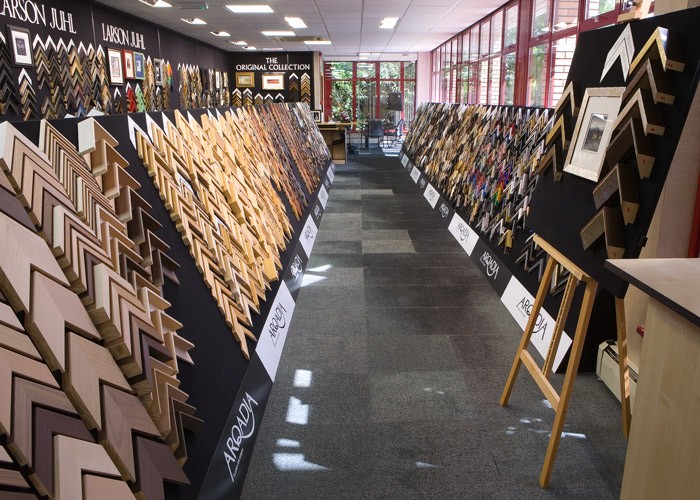The story of wooden mouldings with Larson-Juhl
During September Design Insider will focus on wood and processes, what better opportunity could we find to speak with Larson-Juhl and discover more about how they process their timber mouldings!
The process starts with the sawing of 60 year-old matured pine trees, with the wood then stored, climatised and taken through the kiln drying process. The timber is sorted, and only the outer edges are used for moulding production. The inner part of the tree is not suitable for the manufacturing of the mouldings.
However, that’s not to say there is any wastage. Wood which is not used in mouldings, and even the sawdust that is created, contributes towards the production of briquettes which are distributed locally for commercial use. These briquettes are also used to power the plant, making it self-sufficient in energy use.
Once the planks have been cut, they are sorted into lengths which are marked to remove any knots and cut into approximately 12 inch blocks. These blocks are then finger jointed by machine and made into three metre stable lengths, ready to be milled into profile shapes.
From milling, they are subject to processes which add gesso – like an undercoat when painting. This gesso is a special formula developed over many years, and gives a nice smooth finish ready for the leaf, foil or spray finish in the final design process.
Larson Juhl ranges that are made from wood include Anvil, Aurora, Brittany, Birchwood, Prague, Sevilla and Sofia – all with unique finishing. The Birchwood moulding, for example, receives a coat of paint to give the realistic appearance of a birch tree trunk.
Larson-Juhl’s entire moulding range consists of over 3,000 different mouldings in a wide range of styles and finishes to suit every framing requirement.
Contact Larson-Juhl UK





